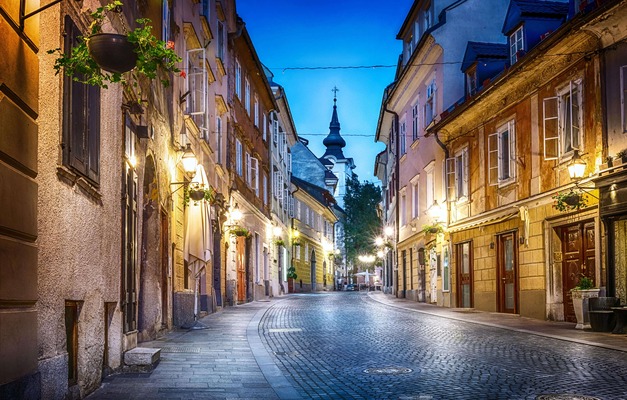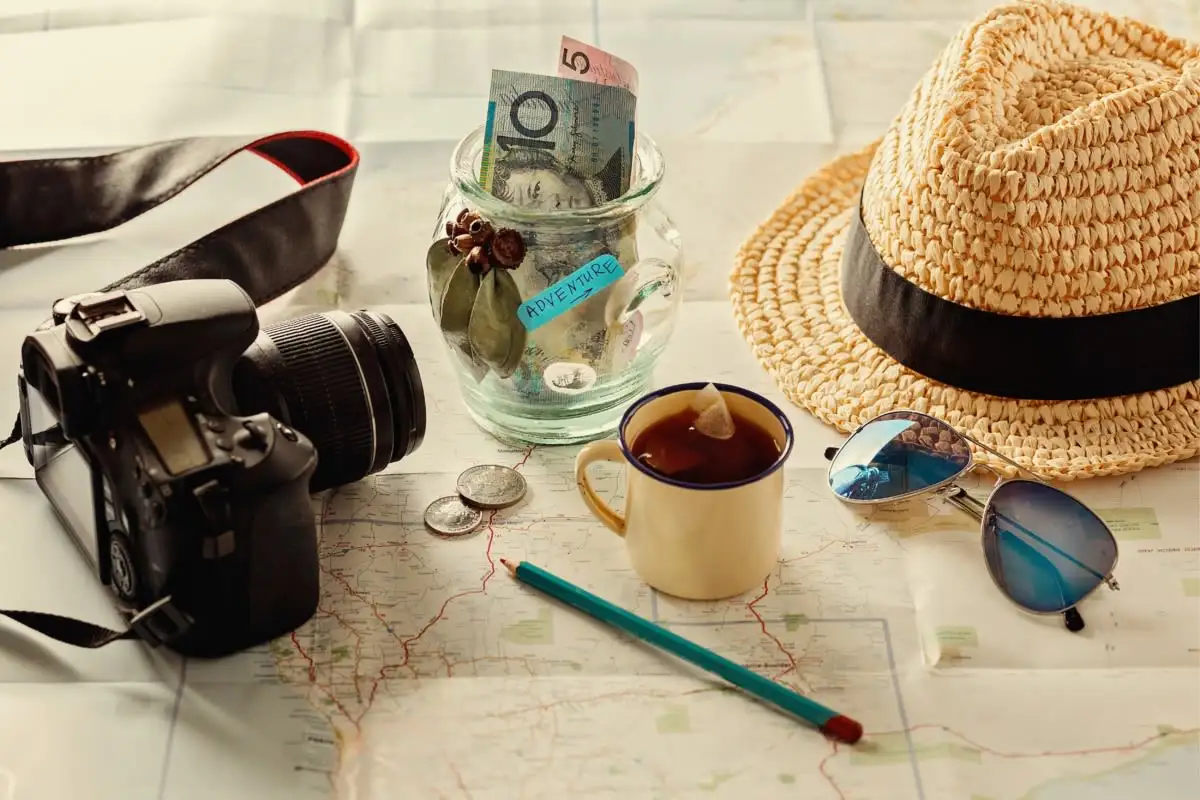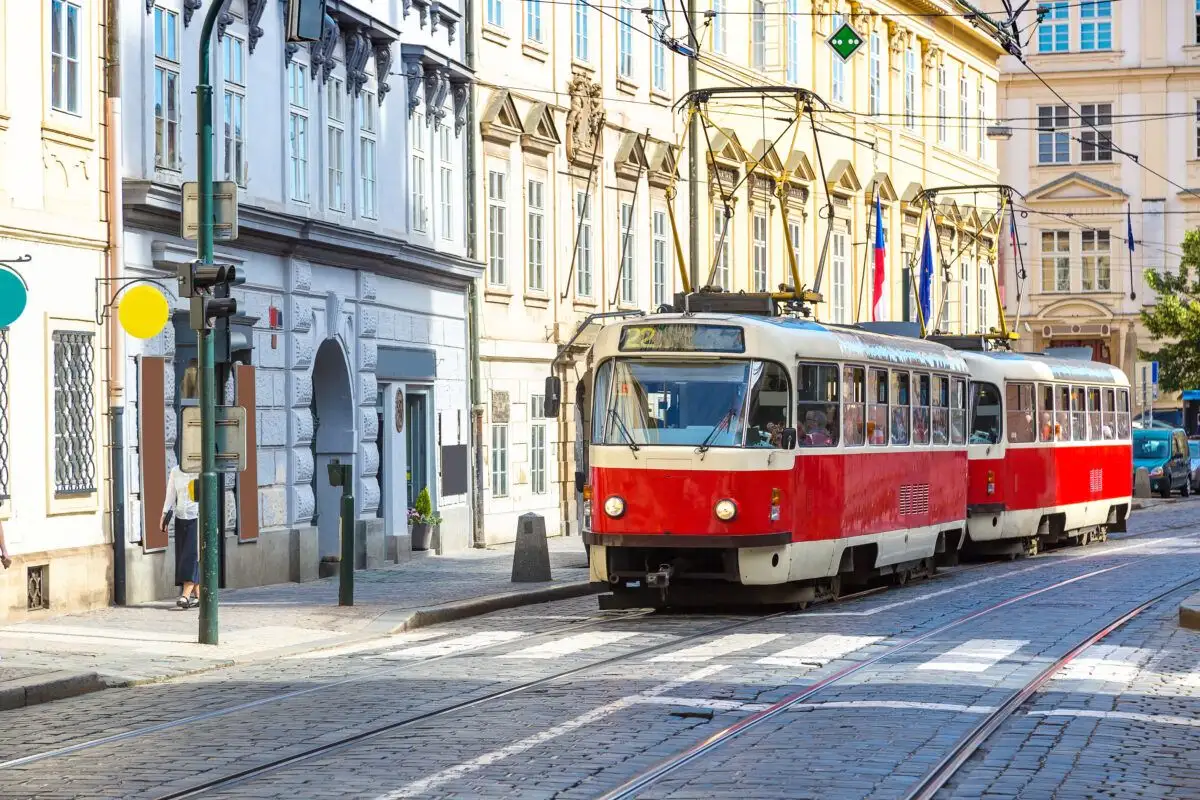
Rhine Valley Rhapsody: Culture and Beer Gardens Galore
 10 Day Tour of Frankfurt, Heidelberg and Cologne
10 Day Tour of Frankfurt, Heidelberg and Cologne
Overview
Trip Map
Itinerary
Inclusions
Reviews







10 Days 9 Nights
Best Time: Jan-Dec
Cultural Exploration
Beer Drinkers
Get intimately acquainted with Germany and its culture on an exquisite 10-day journey across its western heartland, including overnights in Frankfurt, Heidelberg, and Cologne. Explore the cities on private guided walks with locals, linger in medieval town squares, and visit UNESCO World Heritage sites. You'll take excursions to the former West German capital of Bonn, the imperial city of Aachen, and the enchanted landscapes of the Black Forest. Relish authentic German cuisine and unwind in traditional beer gardens. With Go Real Travel, you'll also benefit from detailed travel guidance provided through our mobile app, ensuring a seamless trip.
- Cruise beneath castles along the Rhine River gorge, one of Europe's most epic stretches of river.
- Wander picturesque medieval lanes in Heidelberg, and ascend to the castle ruins above the Old Town
- Voyage to the Black Forest on a guided excursion, where tranquil nature & fairy-tale villages await
- Climb the bell tower of Cologne's massive cathedral and explore its charming Altstadt.
- Discover the beer culture of Cologne, exploring the unique Kölsch beer on a special brewhouse tour.
Get intimately acquainted with Germany and its culture on an exquisite 10-day journey across its western heartland, including overnights in Frankfurt, Heidelberg, and Cologne. Explore the cities on private guided walks with locals, linger in medieval town squares, and visit UNESCO World Heritage sites. You'll take excursions to the former West German capital of Bonn, the imperial city of Aachen, and the enchanted landscapes of the Black Forest. Relish authentic German cuisine and unwind in traditional beer gardens. With Go Real Travel, you'll also benefit from detailed travel guidance provided through our mobile app, ensuring a seamless trip.
- Cruise beneath castles along the Rhine River gorge, one of Europe's most epic stretches of river.
- Wander picturesque medieval lanes in Heidelberg, and ascend to the castle ruins above the Old Town
- Voyage to the Black Forest on a guided excursion, where tranquil nature & fairy-tale villages await
- Climb the bell tower of Cologne's massive cathedral and explore its charming Altstadt.
- Discover the beer culture of Cologne, exploring the unique Kölsch beer on a special brewhouse tour.

Römerberg
Historic Landmarks

Frankfurt Cathedral
Churches & Monasteries

Eiserner Steg Bridge
Architecture

Heidelberg Castle
Castles & Chateaux

Church of the Holy Spirit
Churches & Monasteries

Old Bridge
Architecture

Cologne Cathedral
UNESCO World Heritage

Hohenzollern Bridge
Architecture

Chocolate Museum
Museums & Galleries
Must see sights

Römerberg
Historic Landmarks

Frankfurt Cathedral
Churches & Monasteries

Eiserner Steg Bridge
Architecture

Heidelberg Castle
Castles & Chateaux

Church of the Holy Spirit
Churches & Monasteries

Old Bridge
Architecture

Cologne Cathedral
UNESCO World Heritage

Hohenzollern Bridge
Architecture

Chocolate Museum
Museums & Galleries
Starting from
$2639
per person
 Not included
Not included Secure Your Customizable Trip
Enter your details to embark on a journey that can be tailored just for you.
Start
Travelers
0 travelers
Add Room
Remove Room
Preferred Hotel Stars
Select Hotel Stars
Craft Your Own Itinerary
Select your interests and destinations for a trip plan inspired by you.
Western Germany Exploration Trip - Map & Itinerary
Enable/Disable Map Scrolling
Click To Make Map Interactive

Western Germany Exploration Trip Timeline
 Edit Details
Edit DetailsArrival
3 nights
Frankfurt
Germany
3 nights
Heidelberg
Germany
Train: 3h
3 nights
Cologne
Germany
Departure
Day-By-Day Itinerary of Western Germany Exploration Trip

Day 1
Arrive Frankfurt
Day 1
Arrive Frankfurt


To Be Determined
Airport Transfer
Frankfurt has one main airport, Frankfurt Airport, where most visitors arrive. Taxis are available directly at the terminal exit, or you can arrange a private transfer for added convenience. The cheapest and fastest way to reach central Frankfurt is by train, as there is a train station located within the airport (just follow the signs). The highspeed InterCity trains, Regional trains, and SBahn trains all have direct routes from the airport to the main train station in Frankfurt (Frankfurt Hbf). Tickets for the ICE trains cost about 15 EUR while tickets for Regional trains and Sbahn are only about 5 EUR. The journey takes approximately 10 to 15 minutes. From the Frankfurt main rail station, you can take a much cheaper taxi or Uber to your hotel, or perhaps even walk. Please note that if flying into the somewhat deceptively named Frankfurt-Hahn Airport, you will need to arrange bus or other transportation to Frankfurt. This airport is actually located about a 90 minute drive from central Frankfurt.

Day 1
Arrive Frankfurt


Day 1
Arrive Frankfurt



To Be Determined:
Airport Transfer
Mid-Day/Afternoon:
North & South Banks


Day 2
Frankfurt
Day 2
Frankfurt



9:00 AM - 12:00 PM
Frankfurt Walking Tour, Guided
Visit the highlights of Frankfurt, and learn about the extensive and fascinating history of this diverse and historic city. Your guide will take you places that the tour buses can't, including the Römer and the Römerplatz, the Book Burning Memorial, Alte Oper, the Eisener Steg and many more!

St. Bartholomew’s Cathedral
St. Bartholomew’s Cathedral was originally a Carolingian chapel and it has been called a cathedral since the 18 th century despite the fact that it has never been an Episcopal church in the true sense. The cathedral was dedicated to Saint Bartholomew in 1239 and was later chosen as the site where elections were held to choose the next king of the Holy Roman Empire.
Show More

St. Bartholomew’s Cathedral
St. Bartholomew’s Cathedral was originally a Carolingian chapel and it has been called a cathedral since the 18 th century despite the fact that it has never been an Episcopal church in the true sense. The cathedral was dedicated to Saint Bartholomew in 1239 and was later chosen as the site where elections were held to choose the next king of the Holy Roman Empire.
Show More

St. Bartholomew’s Cathedral
St. Bartholomew’s Cathedral was originally a Carolingian chapel and it has been called a cathedral since the 18 th century despite the fact that it has never been an Episcopal church in the true sense. The cathedral was dedicated to Saint Bartholomew in 1239 and was later chosen as the site where elections were held to choose the next king of the Holy Roman Empire.
Show More

St. Bartholomew’s Cathedral
St. Bartholomew’s Cathedral was originally a Carolingian chapel and it has been called a cathedral since the 18 th century despite the fact that it has never been an Episcopal church in the true sense. The cathedral was dedicated to Saint Bartholomew in 1239 and was later chosen as the site where elections were held to choose the next king of the Holy Roman Empire.
Show More

St. Bartholomew’s Cathedral
St. Bartholomew’s Cathedral was originally a Carolingian chapel and it has been called a cathedral since the 18 th century despite the fact that it has never been an Episcopal church in the true sense. The cathedral was dedicated to Saint Bartholomew in 1239 and was later chosen as the site where elections were held to choose the next king of the Holy Roman Empire.
Show More
prev
next

Day 2
Frankfurt


St. Bartholomew’s Cathedral
 Highlight of Frankfurt Walking Tour, Guided
Highlight of Frankfurt Walking Tour, GuidedSt. Bartholomew’s Cathedral was originally a Carolingian chapel and it has been called a cathedral since the 18 th century despite the fact that it has never been an Episcopal church in the true sense. The cathedral was dedicated to Saint Bartholomew in 1239 and was later chosen as the site where elections were held to choose the next king of the Holy Roman Empire.
Between 1562 and 1792, ten coronation ceremonies took place at the cathedral. The cathedral was damaged in a fire in August 1867 and was then reconstructed in the neo-Gothic style. Again, the cathedral was severely damaged by the bombings in WWII but was completely rebuilt by 1953. In 1987, a museum was opened in the medieval cloister of the cathedral. The museum provides visitors with information on the dramatic history of the church. Opening hours: Tue–Fri 10am–5pm, Sat, Sun, public holidays 11am–5pm MONDAYS CLOSED

St. Bartholomew’s Cathedral
 Highlight of Frankfurt Walking Tour, Guided
Highlight of Frankfurt Walking Tour, GuidedSt. Bartholomew’s Cathedral was originally a Carolingian chapel and it has been called a cathedral since the 18 th century despite the fact that it has never been an Episcopal church in the true sense. The cathedral was dedicated to Saint Bartholomew in 1239 and was later chosen as the site where elections were held to choose the next king of the Holy Roman Empire.
Between 1562 and 1792, ten coronation ceremonies took place at the cathedral. The cathedral was damaged in a fire in August 1867 and was then reconstructed in the neo-Gothic style. Again, the cathedral was severely damaged by the bombings in WWII but was completely rebuilt by 1953. In 1987, a museum was opened in the medieval cloister of the cathedral. The museum provides visitors with information on the dramatic history of the church. Opening hours: Tue–Fri 10am–5pm, Sat, Sun, public holidays 11am–5pm MONDAYS CLOSED

St. Bartholomew’s Cathedral
 Highlight of Frankfurt Walking Tour, Guided
Highlight of Frankfurt Walking Tour, GuidedSt. Bartholomew’s Cathedral was originally a Carolingian chapel and it has been called a cathedral since the 18 th century despite the fact that it has never been an Episcopal church in the true sense. The cathedral was dedicated to Saint Bartholomew in 1239 and was later chosen as the site where elections were held to choose the next king of the Holy Roman Empire.
Between 1562 and 1792, ten coronation ceremonies took place at the cathedral. The cathedral was damaged in a fire in August 1867 and was then reconstructed in the neo-Gothic style. Again, the cathedral was severely damaged by the bombings in WWII but was completely rebuilt by 1953. In 1987, a museum was opened in the medieval cloister of the cathedral. The museum provides visitors with information on the dramatic history of the church. Opening hours: Tue–Fri 10am–5pm, Sat, Sun, public holidays 11am–5pm MONDAYS CLOSED

St. Bartholomew’s Cathedral
 Highlight of Frankfurt Walking Tour, Guided
Highlight of Frankfurt Walking Tour, GuidedSt. Bartholomew’s Cathedral was originally a Carolingian chapel and it has been called a cathedral since the 18 th century despite the fact that it has never been an Episcopal church in the true sense. The cathedral was dedicated to Saint Bartholomew in 1239 and was later chosen as the site where elections were held to choose the next king of the Holy Roman Empire.
Between 1562 and 1792, ten coronation ceremonies took place at the cathedral. The cathedral was damaged in a fire in August 1867 and was then reconstructed in the neo-Gothic style. Again, the cathedral was severely damaged by the bombings in WWII but was completely rebuilt by 1953. In 1987, a museum was opened in the medieval cloister of the cathedral. The museum provides visitors with information on the dramatic history of the church. Opening hours: Tue–Fri 10am–5pm, Sat, Sun, public holidays 11am–5pm MONDAYS CLOSED

St. Bartholomew’s Cathedral
 Highlight of Frankfurt Walking Tour, Guided
Highlight of Frankfurt Walking Tour, GuidedSt. Bartholomew’s Cathedral was originally a Carolingian chapel and it has been called a cathedral since the 18 th century despite the fact that it has never been an Episcopal church in the true sense. The cathedral was dedicated to Saint Bartholomew in 1239 and was later chosen as the site where elections were held to choose the next king of the Holy Roman Empire.
Between 1562 and 1792, ten coronation ceremonies took place at the cathedral. The cathedral was damaged in a fire in August 1867 and was then reconstructed in the neo-Gothic style. Again, the cathedral was severely damaged by the bombings in WWII but was completely rebuilt by 1953. In 1987, a museum was opened in the medieval cloister of the cathedral. The museum provides visitors with information on the dramatic history of the church. Opening hours: Tue–Fri 10am–5pm, Sat, Sun, public holidays 11am–5pm MONDAYS CLOSED
prev
next


Day 3
Frankfurt
Day 3
Frankfurt


Early Morning to Late Afternoon
Rhine Gorge Cruise
Board a riverboat from the town of Rüdesheim and take a cruise northwards up the incomparable Rhine River Gorge wreathed on either side with vineyards groaning with Reisling and Pinot Noir grapes, and colonized with impossibly romantic chateaux and castle ruins. Alternatively, hire a bicycle and pedal up the gorge, stopping off at rustic villages along the way, before heading back for a well-earned glass of the local wine.

Niederwalddenkmal
Hike about one mile (1.6km) from the top chairlift station to this over-the-top but undeniably impressive monument celebrating German unification.
Show More

Castle Ehrenfels
Hike to these castle ruins overlooking the river.
Show More

Seilbahn
Effortlessly ascend to the top of the hills overlooking the valley and go for a walk among the vineyards and forests.
Show More

Niederwalddenkmal
Hike about one mile (1.6km) from the top chairlift station to this over-the-top but undeniably impressive monument celebrating German unification.
Show More

Castle Ehrenfels
Hike to these castle ruins overlooking the river.
Show More

Seilbahn
Effortlessly ascend to the top of the hills overlooking the valley and go for a walk among the vineyards and forests.
Show More

Niederwalddenkmal
Hike about one mile (1.6km) from the top chairlift station to this over-the-top but undeniably impressive monument celebrating German unification.
Show More
prev
next

Day 3
Frankfurt


Niederwalddenkmal
 Highlight of Rhine Gorge Cruise
Highlight of Rhine Gorge CruiseHike about one mile (1.6km) from the top chairlift station to this over-the-top but undeniably impressive monument celebrating German unification.
Niederwalddenkmal (Niederwald Monument, or Statue of Germania) is a gargantuan and rather bellicose monument celebrating the 1871 foundation of the German Reich after the end of the Franco-Prussian War. Until then, most people within the new empire had continued to think of themselves first and foremost as Prussians, Bavarians or Saxons, and only secondly as Germans, so the erection of national monuments such as Germania was therefore intended to awaken German national feeling.

Castle Ehrenfels
 Highlight of Rhine Gorge Cruise
Highlight of Rhine Gorge CruiseHike to these castle ruins overlooking the river.
From the Niederwald Monument, you can also follow the markings to the town of Assmannshausen and the picturesque medieval castle ruins of Burg Ehrenfels facing the equally romantic Mäuseturm (Mouse Tower) on an islet in the river originally used to collect river tolls until wrecked by the French in 1688. The hike from the Niederwalddenkmal to Assmannshausen takes two hours, and from there you can take a boat or train back to Rüdesheim.

Seilbahn
 Highlight of Rhine Gorge Cruise
Highlight of Rhine Gorge CruiseEffortlessly ascend to the top of the hills overlooking the valley and go for a walk among the vineyards and forests.
This antique 1950s chairlift offers great views over the town and the Rhine Valley that streches away to Mainz. The upper station above many of the local vineyards is close to one of the most popular tourist sights in Germany for German tourists, the Niederwalddenkmal (Niederwald Monument, or Statue of Germania).

Niederwalddenkmal
 Highlight of Rhine Gorge Cruise
Highlight of Rhine Gorge CruiseHike about one mile (1.6km) from the top chairlift station to this over-the-top but undeniably impressive monument celebrating German unification.
Niederwalddenkmal (Niederwald Monument, or Statue of Germania) is a gargantuan and rather bellicose monument celebrating the 1871 foundation of the German Reich after the end of the Franco-Prussian War. Until then, most people within the new empire had continued to think of themselves first and foremost as Prussians, Bavarians or Saxons, and only secondly as Germans, so the erection of national monuments such as Germania was therefore intended to awaken German national feeling.

Castle Ehrenfels
 Highlight of Rhine Gorge Cruise
Highlight of Rhine Gorge CruiseHike to these castle ruins overlooking the river.
From the Niederwald Monument, you can also follow the markings to the town of Assmannshausen and the picturesque medieval castle ruins of Burg Ehrenfels facing the equally romantic Mäuseturm (Mouse Tower) on an islet in the river originally used to collect river tolls until wrecked by the French in 1688. The hike from the Niederwalddenkmal to Assmannshausen takes two hours, and from there you can take a boat or train back to Rüdesheim.

Seilbahn
 Highlight of Rhine Gorge Cruise
Highlight of Rhine Gorge CruiseEffortlessly ascend to the top of the hills overlooking the valley and go for a walk among the vineyards and forests.
This antique 1950s chairlift offers great views over the town and the Rhine Valley that streches away to Mainz. The upper station above many of the local vineyards is close to one of the most popular tourist sights in Germany for German tourists, the Niederwalddenkmal (Niederwald Monument, or Statue of Germania).

Niederwalddenkmal
 Highlight of Rhine Gorge Cruise
Highlight of Rhine Gorge CruiseHike about one mile (1.6km) from the top chairlift station to this over-the-top but undeniably impressive monument celebrating German unification.
Niederwalddenkmal (Niederwald Monument, or Statue of Germania) is a gargantuan and rather bellicose monument celebrating the 1871 foundation of the German Reich after the end of the Franco-Prussian War. Until then, most people within the new empire had continued to think of themselves first and foremost as Prussians, Bavarians or Saxons, and only secondly as Germans, so the erection of national monuments such as Germania was therefore intended to awaken German national feeling.
prev
next

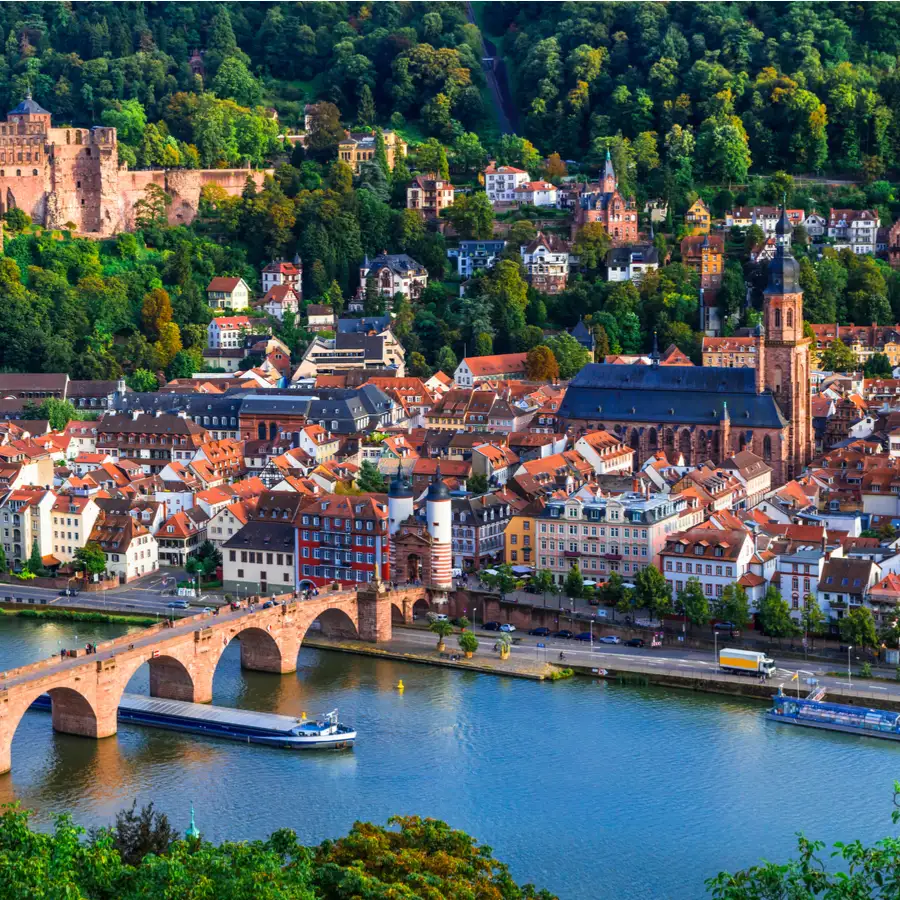
Day 4
Frankfurt to Heidelberg
Day 4
Frankfurt to Heidelberg





To Be Determined
Transfer to Rail Station
Most trains depart from Frankfurt hbf (i.e. Frankfurt Main Station) station, the largest station in the city. Before spending money on a transfer, be sure to check whether your hotel is within easy walking distance. Also consider that public transport is the cheapest and sometimes fastest option. If staying at a hotel, they can order a reliable taxi. Some private transfers will even help with your bags. Uber is also available for those with the app.

Day 4
Frankfurt to Heidelberg


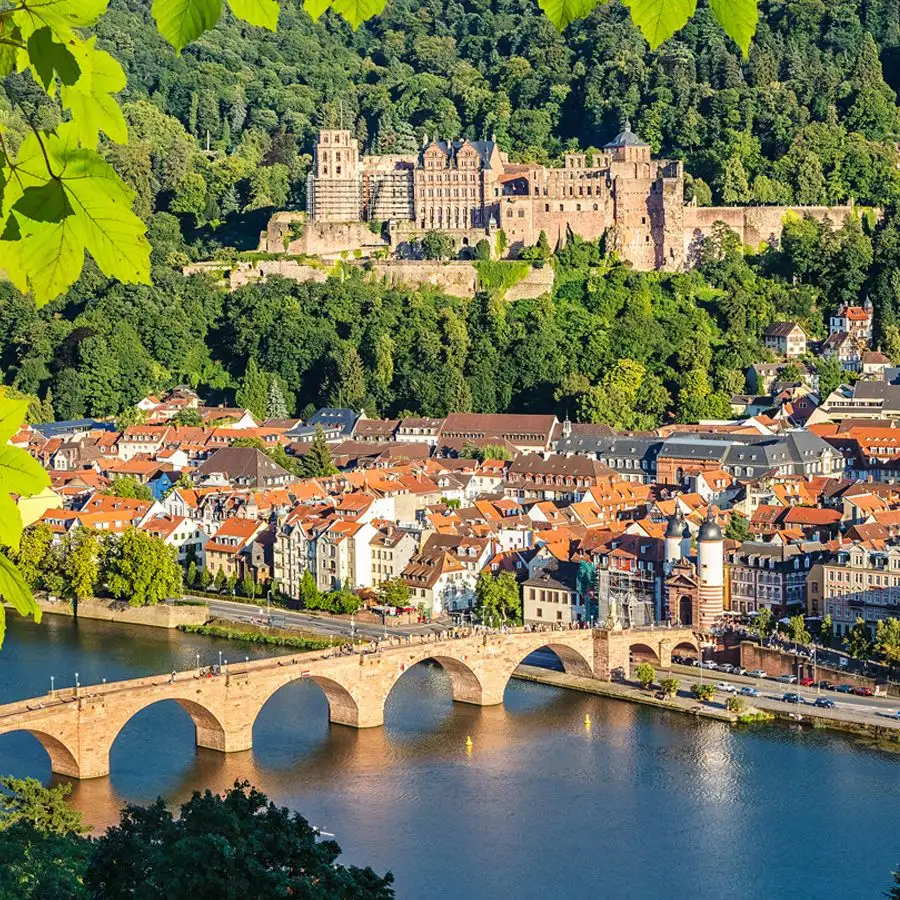
Day 5
Heidelberg
Day 5
Heidelberg


9:00 AM - 1:00 PM
Guided Walking Tour of Heidelberg
On this 4 hour tour, your guide will show you the highlights of Heidelberg and help you understand what makes this city so unique. Sites visited will include the Heidelberg University, the Old Bridge, Altstadt, Town Hall and Heidelberg Castle.
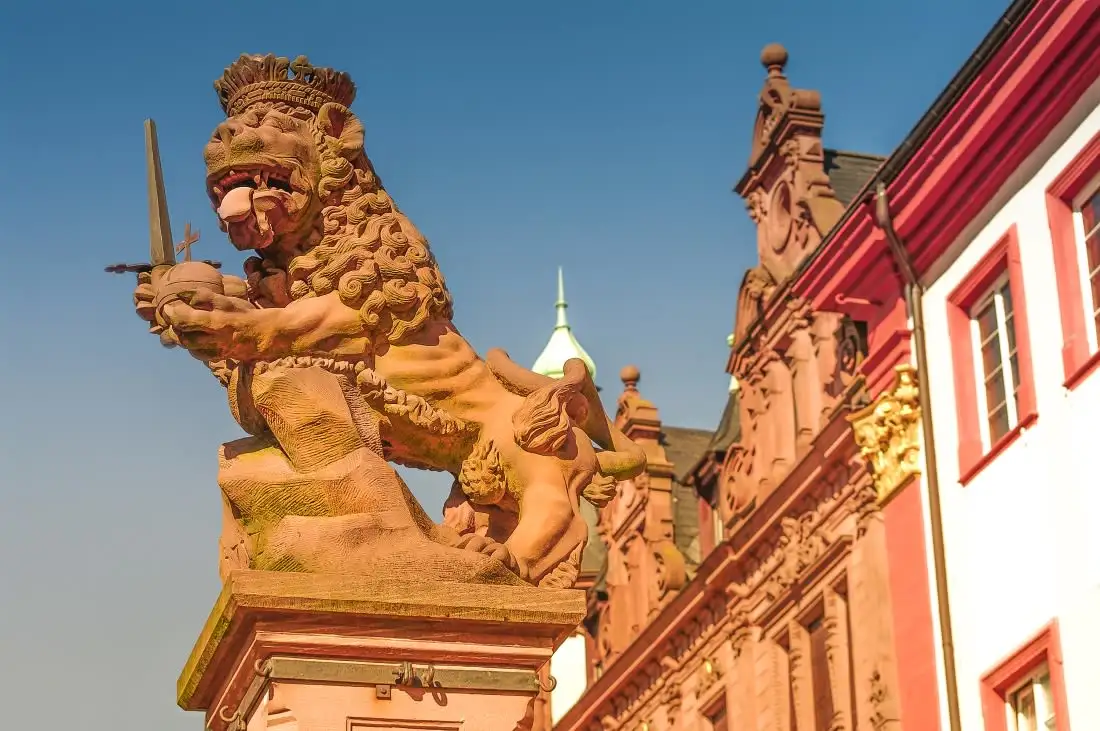
Altstadt
The light and colors of this historic city are a happy sight to behold.
Show More

Heidelberg University
Founded in 1386, this is Germany’s oldest and one of its most prestigious universities.
Show More

Altstadt
The light and colors of this historic city are a happy sight to behold.
Show More

Heidelberg University
Founded in 1386, this is Germany’s oldest and one of its most prestigious universities.
Show More

Altstadt
The light and colors of this historic city are a happy sight to behold.
Show More

Heidelberg University
Founded in 1386, this is Germany’s oldest and one of its most prestigious universities.
Show More
prev
next

Day 5
Heidelberg


Altstadt
 Highlight of Guided Walking Tour of Heidelberg
Highlight of Guided Walking Tour of HeidelbergThe light and colors of this historic city are a happy sight to behold.
The Old Town of Heidelberg, Germany, seduces with its views. Framed by the Neckar River and overlooked by the majestic Heidelberg Castle, its cobblestone streets, baroque architecture, and the oldest university in Germany beckon visitors. Highlights include the Hauptstrasse, a bustling pedestrian shopping street, and the historic Holy Spirit Church. Heidelberg's Old Town embodies the romantic spirit of Germany.
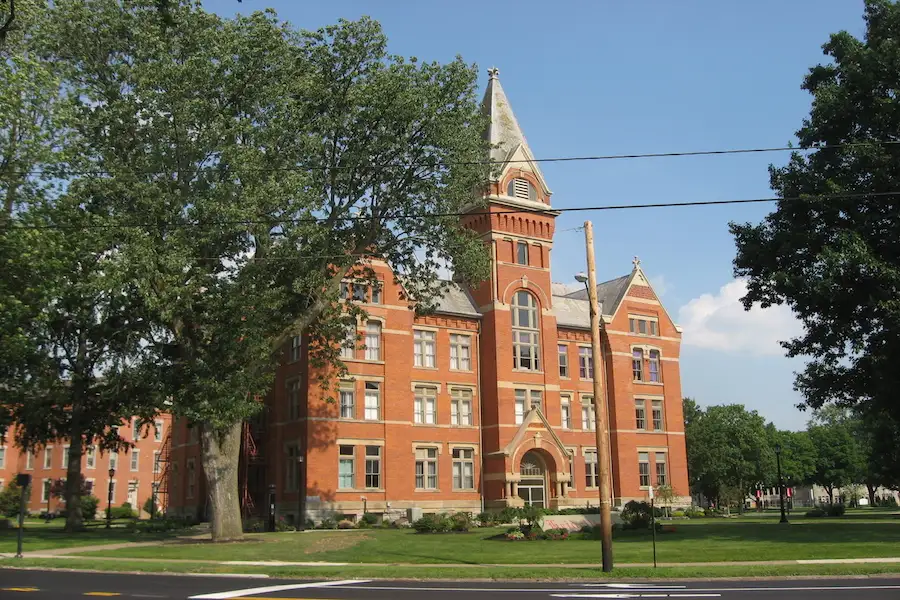
Heidelberg University
 Highlight of Guided Walking Tour of Heidelberg
Highlight of Guided Walking Tour of HeidelbergFounded in 1386, this is Germany’s oldest and one of its most prestigious universities.
The university is currently comprised of 12 faculties with over 30,000 German and international students enrolled. The college is known for its reputable science, art, law, and medical programs. The most historic facilities are located around the Universitätsplatz and dominated by the Alte Universität (Old University, 1712–28; on the south side) and the Neue Universität (New University, 1931; on the north side).

Altstadt
 Highlight of Guided Walking Tour of Heidelberg
Highlight of Guided Walking Tour of HeidelbergThe light and colors of this historic city are a happy sight to behold.
The Old Town of Heidelberg, Germany, seduces with its views. Framed by the Neckar River and overlooked by the majestic Heidelberg Castle, its cobblestone streets, baroque architecture, and the oldest university in Germany beckon visitors. Highlights include the Hauptstrasse, a bustling pedestrian shopping street, and the historic Holy Spirit Church. Heidelberg's Old Town embodies the romantic spirit of Germany.

Heidelberg University
 Highlight of Guided Walking Tour of Heidelberg
Highlight of Guided Walking Tour of HeidelbergFounded in 1386, this is Germany’s oldest and one of its most prestigious universities.
The university is currently comprised of 12 faculties with over 30,000 German and international students enrolled. The college is known for its reputable science, art, law, and medical programs. The most historic facilities are located around the Universitätsplatz and dominated by the Alte Universität (Old University, 1712–28; on the south side) and the Neue Universität (New University, 1931; on the north side).

Altstadt
 Highlight of Guided Walking Tour of Heidelberg
Highlight of Guided Walking Tour of HeidelbergThe light and colors of this historic city are a happy sight to behold.
The Old Town of Heidelberg, Germany, seduces with its views. Framed by the Neckar River and overlooked by the majestic Heidelberg Castle, its cobblestone streets, baroque architecture, and the oldest university in Germany beckon visitors. Highlights include the Hauptstrasse, a bustling pedestrian shopping street, and the historic Holy Spirit Church. Heidelberg's Old Town embodies the romantic spirit of Germany.

Heidelberg University
 Highlight of Guided Walking Tour of Heidelberg
Highlight of Guided Walking Tour of HeidelbergFounded in 1386, this is Germany’s oldest and one of its most prestigious universities.
The university is currently comprised of 12 faculties with over 30,000 German and international students enrolled. The college is known for its reputable science, art, law, and medical programs. The most historic facilities are located around the Universitätsplatz and dominated by the Alte Universität (Old University, 1712–28; on the south side) and the Neue Universität (New University, 1931; on the north side).
prev
next

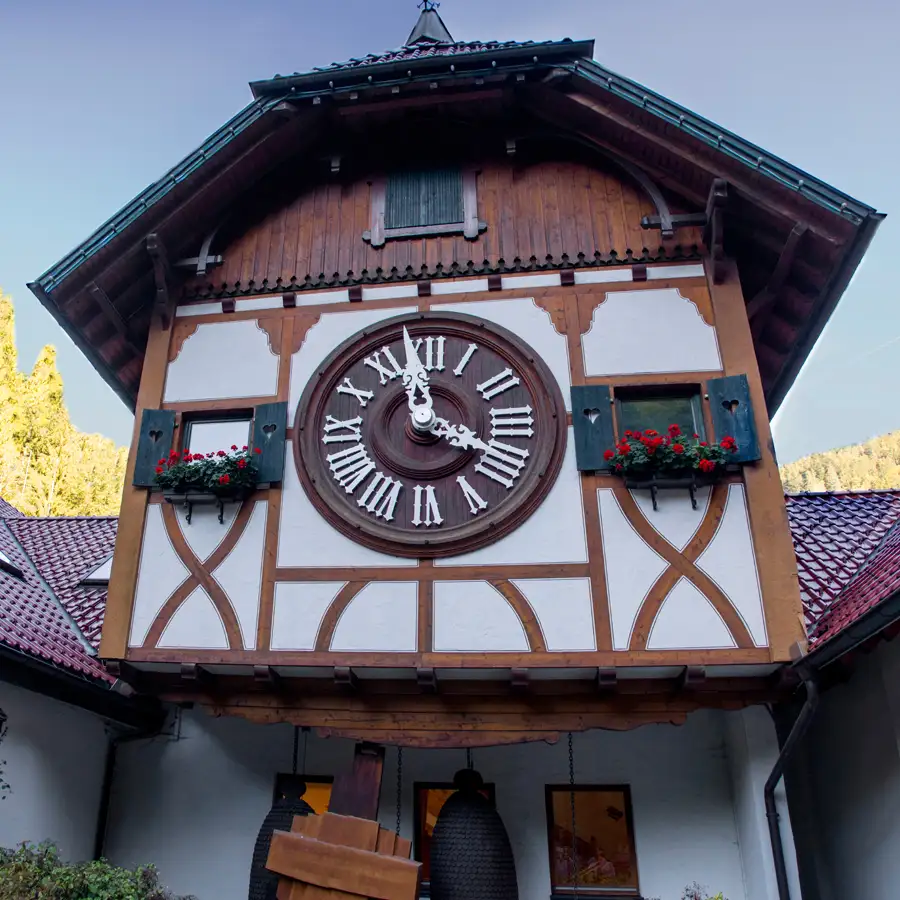
Day 6
Heidelberg
Day 6
Heidelberg


8:30 AM - 3:30 PM
Black Forest, Guided, by Vehicle
With over 6,000 square kilometres of rolling hills, magnificent mountains, and pristine old forests, the Black Forest (Schwarzwald in German) is truly a national treasure. Outdoors enthusiasts travelling to Heidelberg are not to miss out on a visit to this incredible region filled with some of Europe’s best hiking and mountain views.

Day 6
Heidelberg



Day 7
Heidelberg to Cologne
Day 7
Heidelberg to Cologne





9:25 AM
Transfer to Rail Station
Most trains depart from Heidelberg Hbf station, the largest station in the city. Before spending money on a transfer, be sure to check whether your hotel is within easy walking distance. Also consider that public transport is the cheapest and sometimes fastest option, and the local tram network stops directly in front of the station. If staying at a hotel, they can order a reliable taxi. Some private transfers will even help with your bags. Uber is not yet available in Heidelberg.

Day 7
Heidelberg to Cologne


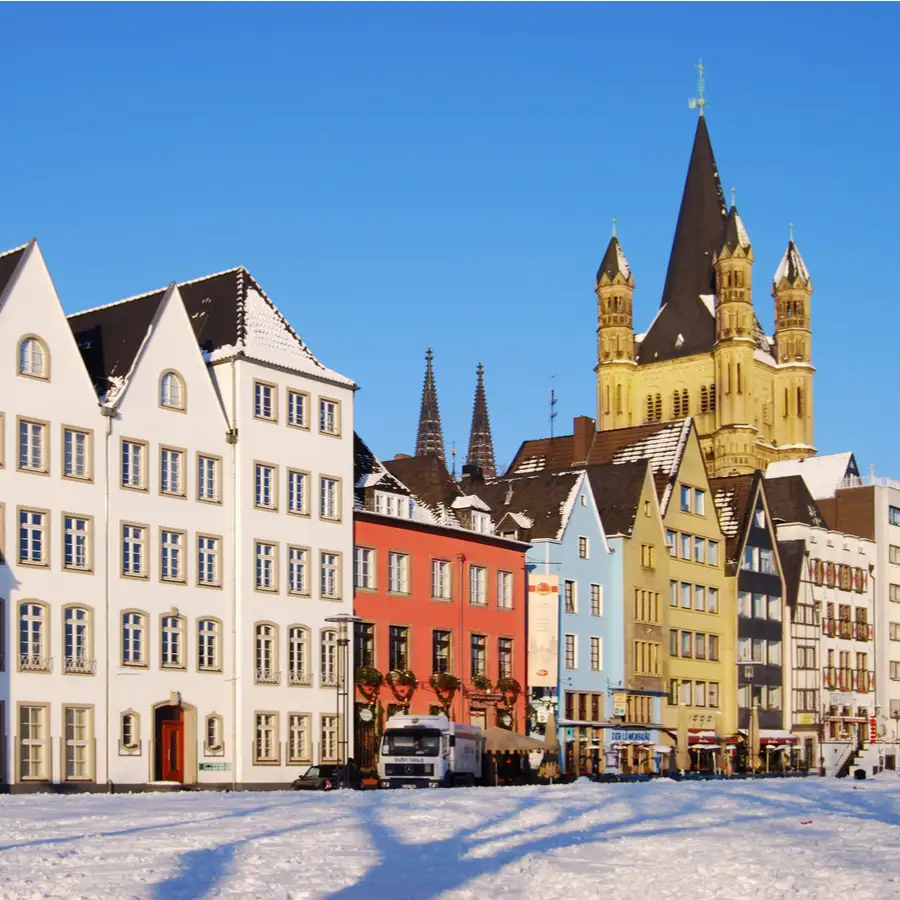
Day 8
Cologne
Day 8
Cologne



9:30 AM - 11:30 AM
Highlights Walking Tour of Cologne
Your private guide will pick you up from your hotel. During this 2-hour walking tour, you will have a chance to get to know many interesting facts about the history of Cologne and visit the biggest highlights of the town. Among the others you will see: Cologne Cathedral, Hohenzollern Bridge, Roncalliplatz, Rheinboulevard, Heumarkt & Alter Markt, Hänneschentheater, Cologne City Hall, Typical Kölsch brewery. After the end of the tour the guide will be happy to give you the recommendations for the rest of your stay in Cologne.

Cologne Cathedral
See Germany's most visited landmark for yourself and then climb a tower that was once the tallest in the world.
Show More

Cologne Cathedral
See Germany's most visited landmark for yourself and then climb a tower that was once the tallest in the world.
Show More

Cologne Cathedral
See Germany's most visited landmark for yourself and then climb a tower that was once the tallest in the world.
Show More

Cologne Cathedral
See Germany's most visited landmark for yourself and then climb a tower that was once the tallest in the world.
Show More

Cologne Cathedral
See Germany's most visited landmark for yourself and then climb a tower that was once the tallest in the world.
Show More
prev
next

Day 8
Cologne


Cologne Cathedral
 Highlight of Highlights Walking Tour of Cologne
Highlight of Highlights Walking Tour of CologneSee Germany's most visited landmark for yourself and then climb a tower that was once the tallest in the world.
Construction began in 1248 but was paused in the 1500's and did not continue until the 19th century. Once completed in 1880, it was the tallest building in the world and to this day it has the tallest twin spires of any Gothic church in the world. The towers’ spires reach a height of 157 m (515 ft). The cathedral is as large as it is strong. During WWII the church was struck with 14 aerial bombs; its enormous size made it a good landmark for the Allied aircraft bombers. Although it was badly damaged by these attacks, it remained standing. The cathedral is home to many treasures, such as the high altar which was constructed in 1322 and is made out of solid black marble. Its most celebrated work of art is the Shrine of the Three Kings. The golden structure is believed to hold the remains to the Three Wise Men, whose remnants were brought from Milan in 1164. Those with a strong constitution can climb 533 steps to a viewing platform on the south tower.

Cologne Cathedral
 Highlight of Highlights Walking Tour of Cologne
Highlight of Highlights Walking Tour of CologneSee Germany's most visited landmark for yourself and then climb a tower that was once the tallest in the world.
Construction began in 1248 but was paused in the 1500's and did not continue until the 19th century. Once completed in 1880, it was the tallest building in the world and to this day it has the tallest twin spires of any Gothic church in the world. The towers’ spires reach a height of 157 m (515 ft). The cathedral is as large as it is strong. During WWII the church was struck with 14 aerial bombs; its enormous size made it a good landmark for the Allied aircraft bombers. Although it was badly damaged by these attacks, it remained standing. The cathedral is home to many treasures, such as the high altar which was constructed in 1322 and is made out of solid black marble. Its most celebrated work of art is the Shrine of the Three Kings. The golden structure is believed to hold the remains to the Three Wise Men, whose remnants were brought from Milan in 1164. Those with a strong constitution can climb 533 steps to a viewing platform on the south tower.

Cologne Cathedral
 Highlight of Highlights Walking Tour of Cologne
Highlight of Highlights Walking Tour of CologneSee Germany's most visited landmark for yourself and then climb a tower that was once the tallest in the world.
Construction began in 1248 but was paused in the 1500's and did not continue until the 19th century. Once completed in 1880, it was the tallest building in the world and to this day it has the tallest twin spires of any Gothic church in the world. The towers’ spires reach a height of 157 m (515 ft). The cathedral is as large as it is strong. During WWII the church was struck with 14 aerial bombs; its enormous size made it a good landmark for the Allied aircraft bombers. Although it was badly damaged by these attacks, it remained standing. The cathedral is home to many treasures, such as the high altar which was constructed in 1322 and is made out of solid black marble. Its most celebrated work of art is the Shrine of the Three Kings. The golden structure is believed to hold the remains to the Three Wise Men, whose remnants were brought from Milan in 1164. Those with a strong constitution can climb 533 steps to a viewing platform on the south tower.

Cologne Cathedral
 Highlight of Highlights Walking Tour of Cologne
Highlight of Highlights Walking Tour of CologneSee Germany's most visited landmark for yourself and then climb a tower that was once the tallest in the world.
Construction began in 1248 but was paused in the 1500's and did not continue until the 19th century. Once completed in 1880, it was the tallest building in the world and to this day it has the tallest twin spires of any Gothic church in the world. The towers’ spires reach a height of 157 m (515 ft). The cathedral is as large as it is strong. During WWII the church was struck with 14 aerial bombs; its enormous size made it a good landmark for the Allied aircraft bombers. Although it was badly damaged by these attacks, it remained standing. The cathedral is home to many treasures, such as the high altar which was constructed in 1322 and is made out of solid black marble. Its most celebrated work of art is the Shrine of the Three Kings. The golden structure is believed to hold the remains to the Three Wise Men, whose remnants were brought from Milan in 1164. Those with a strong constitution can climb 533 steps to a viewing platform on the south tower.

Cologne Cathedral
 Highlight of Highlights Walking Tour of Cologne
Highlight of Highlights Walking Tour of CologneSee Germany's most visited landmark for yourself and then climb a tower that was once the tallest in the world.
Construction began in 1248 but was paused in the 1500's and did not continue until the 19th century. Once completed in 1880, it was the tallest building in the world and to this day it has the tallest twin spires of any Gothic church in the world. The towers’ spires reach a height of 157 m (515 ft). The cathedral is as large as it is strong. During WWII the church was struck with 14 aerial bombs; its enormous size made it a good landmark for the Allied aircraft bombers. Although it was badly damaged by these attacks, it remained standing. The cathedral is home to many treasures, such as the high altar which was constructed in 1322 and is made out of solid black marble. Its most celebrated work of art is the Shrine of the Three Kings. The golden structure is believed to hold the remains to the Three Wise Men, whose remnants were brought from Milan in 1164. Those with a strong constitution can climb 533 steps to a viewing platform on the south tower.
prev
next


Day 9
Cologne
Day 9
Cologne


Morning to Afternoon
Aachen Excursion
Less than an hour from Cologne by train you'll discover Aachen, a small spa city located snugly next to the border with Belgium and the Netherlands. The city is famous not only for its thermal water, but also for its historical ties to the greatest and first Holy Roman Emperor, Charlemagne. Aachen was the place where he and 31 other Holy Emperors were crowned King of the Romans, although in reality it was mostly Germans that they ruled over. Visitors can explore the Charlemagne Route, visit a spa, enter the jaw-dropping cathedral, or just take in the charming ambience of a city whose story stretches back to Roman times.
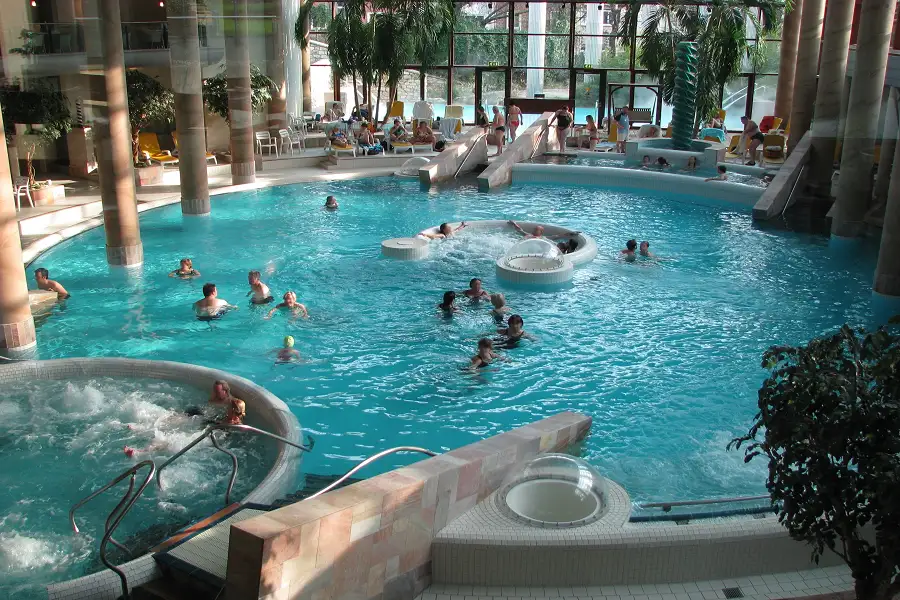
Carolus Thermen
Experience the thermal springs which first drew settlers to Aachen.
Show More

Elisenbrunnen
Smell and taste the sulphurous minerals springs which symbolize the city’s long history of thermal baths.
Show More

City Hall & Center Charlemagne
See the 14th-century city hall built where the coronation feasts were held, and visit a museum exploring Aachen's past.
Show More
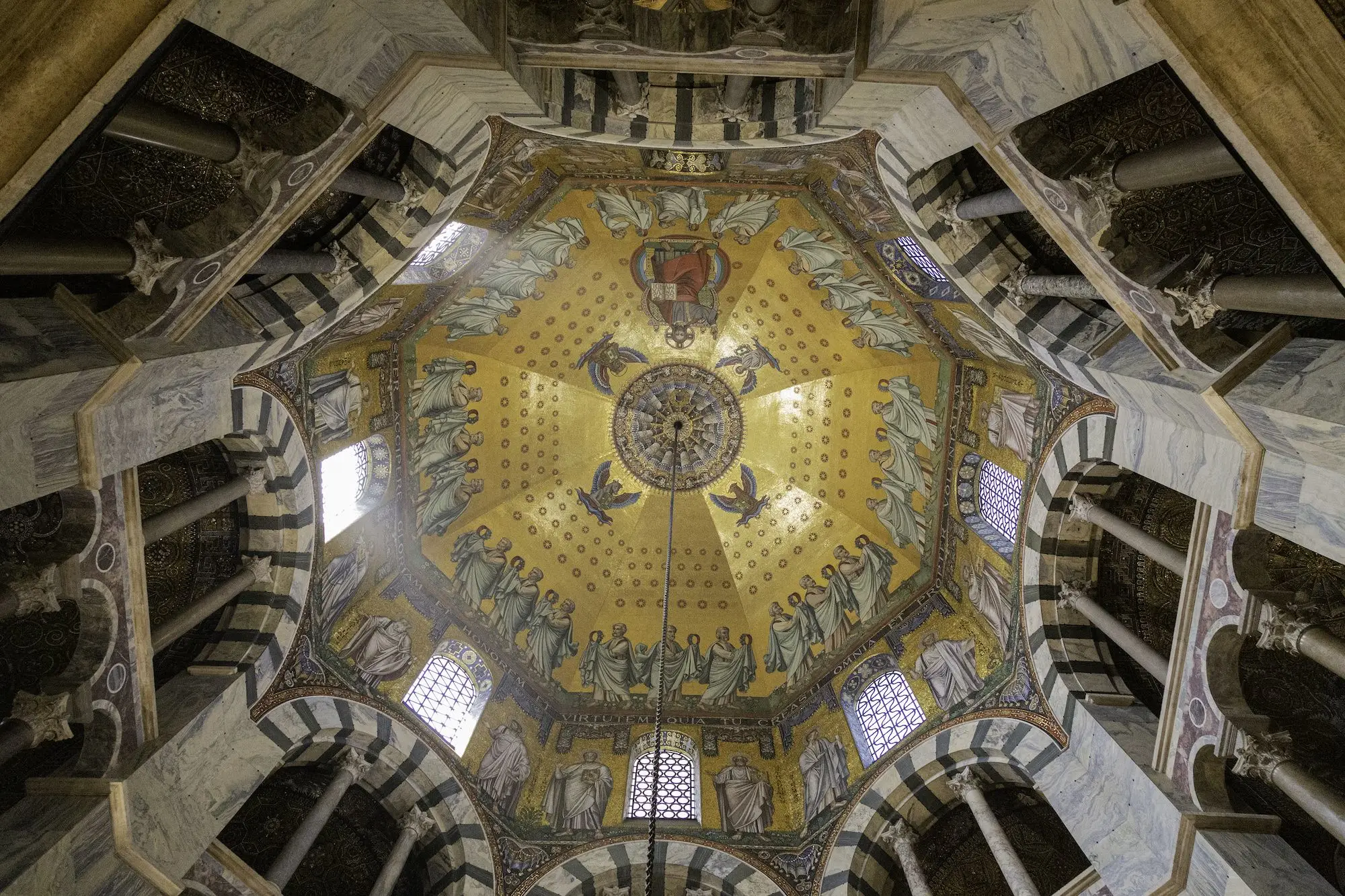
Aachen Cathedral
Walk through one of the oldest cathedrals in Europe and marvel at the colorful Romanesque and Gothic architecture.
Show More

Carolus Thermen
Experience the thermal springs which first drew settlers to Aachen.
Show More

Elisenbrunnen
Smell and taste the sulphurous minerals springs which symbolize the city’s long history of thermal baths.
Show More

City Hall & Center Charlemagne
See the 14th-century city hall built where the coronation feasts were held, and visit a museum exploring Aachen's past.
Show More

Aachen Cathedral
Walk through one of the oldest cathedrals in Europe and marvel at the colorful Romanesque and Gothic architecture.
Show More
prev
next

Day 9
Cologne


Carolus Thermen
 Highlight of Aachen Excursion
Highlight of Aachen ExcursionExperience the thermal springs which first drew settlers to Aachen.
There are more than 30 mineral-rich springs in the Aachen area. One of these springs, the so-called “Rosenquelle”, is located directly beneath the city and continuously supplies the Carolus Thermen with fresh mineral water of 47° celsius (116° F) temperature. With eight indoor and outdoor pools of various temperatures and several other interesting features, it is one of the city's most visited baths.

Elisenbrunnen
 Highlight of Aachen Excursion
Highlight of Aachen ExcursionSmell and taste the sulphurous minerals springs which symbolize the city’s long history of thermal baths.
Located in a neo-classical pavillon built in 1827, you'll find two drinking fountains where you can try the water for yourself. They are prominently featured in a park in the city center, but if you have any trouble finding them, just follow the smell of the sulfur.

City Hall & Center Charlemagne
 Highlight of Aachen Excursion
Highlight of Aachen ExcursionSee the 14th-century city hall built where the coronation feasts were held, and visit a museum exploring Aachen's past.
The Rathaus, or city hall, is still the seat of the mayor and city council. A museum gives visitors a sense for the lavish coronation banquets that took there. Next door in the Center Charlemagne, visitors learn about Charlemagne and other city history, stretching back into antiquity. For instance, it explains how the first settlements were built around the thermal springs and how it later became a Roman bath.

Aachen Cathedral
 Highlight of Aachen Excursion
Highlight of Aachen ExcursionWalk through one of the oldest cathedrals in Europe and marvel at the colorful Romanesque and Gothic architecture.
First built in 805 AD (although with later Gothic additions) the cathedral is one of the most historic in Europe. Indeed it was the first place in Germany to be designated a UNESCO World Heritage site. Over 30 coronations of the King of the Romans took place here. Somewhat confusingly, King of the Romans was the title assumed by the kings of the Germans until they could be crowned Holy Roman Emperor by the pope. The cathedral is the burial site of Charlemagne, who founded the Holy Roman Empire and is considered one of the most important figures in all of European history. The Cathedral Treasury is also home to many sacral art treasures including the Cross of Lothair, the Bust of Charlemagne, and the Persephone sarcophagus. It is recommended that visitors take the Treasury audio guide for more information on the displays.

Carolus Thermen
 Highlight of Aachen Excursion
Highlight of Aachen ExcursionExperience the thermal springs which first drew settlers to Aachen.
There are more than 30 mineral-rich springs in the Aachen area. One of these springs, the so-called “Rosenquelle”, is located directly beneath the city and continuously supplies the Carolus Thermen with fresh mineral water of 47° celsius (116° F) temperature. With eight indoor and outdoor pools of various temperatures and several other interesting features, it is one of the city's most visited baths.

Elisenbrunnen
 Highlight of Aachen Excursion
Highlight of Aachen ExcursionSmell and taste the sulphurous minerals springs which symbolize the city’s long history of thermal baths.
Located in a neo-classical pavillon built in 1827, you'll find two drinking fountains where you can try the water for yourself. They are prominently featured in a park in the city center, but if you have any trouble finding them, just follow the smell of the sulfur.

City Hall & Center Charlemagne
 Highlight of Aachen Excursion
Highlight of Aachen ExcursionSee the 14th-century city hall built where the coronation feasts were held, and visit a museum exploring Aachen's past.
The Rathaus, or city hall, is still the seat of the mayor and city council. A museum gives visitors a sense for the lavish coronation banquets that took there. Next door in the Center Charlemagne, visitors learn about Charlemagne and other city history, stretching back into antiquity. For instance, it explains how the first settlements were built around the thermal springs and how it later became a Roman bath.

Aachen Cathedral
 Highlight of Aachen Excursion
Highlight of Aachen ExcursionWalk through one of the oldest cathedrals in Europe and marvel at the colorful Romanesque and Gothic architecture.
First built in 805 AD (although with later Gothic additions) the cathedral is one of the most historic in Europe. Indeed it was the first place in Germany to be designated a UNESCO World Heritage site. Over 30 coronations of the King of the Romans took place here. Somewhat confusingly, King of the Romans was the title assumed by the kings of the Germans until they could be crowned Holy Roman Emperor by the pope. The cathedral is the burial site of Charlemagne, who founded the Holy Roman Empire and is considered one of the most important figures in all of European history. The Cathedral Treasury is also home to many sacral art treasures including the Cross of Lothair, the Bust of Charlemagne, and the Persephone sarcophagus. It is recommended that visitors take the Treasury audio guide for more information on the displays.
prev
next


Day 10
Depart Cologne
Day 10
Depart Cologne

To Be Determined
Private Airport Dropoff
A car service will pick you up from the N/A and deliver you to Cologne Bonn Airport for your flight departure. This is a private transfer just for your travel party, and you will not need to pay the driver for the transfer, as it is already included in the cost of the itinerary.

Day 10
Depart Cologne


What's Included In Western Germany Exploration Trip

Pre-Paid Tours and Activities:
- Best of Frankfurt Guided Walking Tour
- Guided Walking Tour of the Heidelberg's Altstadt and Castle
- Guided Excursion to the Black Forest
- Private Highlights Walking Tour of Cologne
- Private Beer and Food Tour of Cologne
- City Card for Cologne, including discounts to many popular attractions

Pre-Paid Transportation:
- 2nd Class Train Tickets from Heidelberg Hbf to Köln Hbf
- Public Transport Tickets for Cologne
- Private Transfer to Airport, and Departure from Cologne

Accommodation:
- 3 nights at a hotel of your choice in Frankfurt
- 3 nights at a hotel of your choice in Heidelberg
- 3 nights at a hotel of your choice in Cologne

Go Real Travel Mobile App:
- Itinerary Plan & Reservations Info
- Points of Interest
- Detailed Travel Information
- Maps & Directions
Other Trips You May Like

12 Days
From$2675USD
Austria, Germany, and Switzerland: Castles, Culture & Captivating Nature

Austria, Germany, Switzerland

10 Days
From$3099USD
A Journey Through Culture and Time in Paris, Amsterdam, and Germany

France, Netherlands, Germany

14 Days
From$3885USD

14 Days
From$4050USD

21 Days
From$5899USD

21 Days
From$5199USD
Canals, Castles, and Culture: A Three-Week Journey in the Netherlands & Germany

Netherlands, Germany

4 Days
From$895USD

10 Days
From$3390USD

10 Days
From$1899USD

12 Days
From$2675USD
Austria, Germany, and Switzerland: Castles, Culture & Captivating Nature

Austria, Germany, Switzerland

10 Days
From$3099USD
A Journey Through Culture and Time in Paris, Amsterdam, and Germany

France, Netherlands, Germany

14 Days
From$3885USD

14 Days
From$4050USD

21 Days
From$5899USD

21 Days
From$5199USD
Canals, Castles, and Culture: A Three-Week Journey in the Netherlands & Germany

Netherlands, Germany

4 Days
From$895USD

10 Days
From$3390USD

10 Days
From$1899USD
prev
next
Featured Blogs
prev
next
Our Customers Say It Best
Marianne Strydom, Paarl, South Africa
I just wanted to thank you for organizing an amazing trip for me – I packed in so much in such a short period of time and everything was just perfect. The way you do things makes it possible to really get to know the destination, which for me as a travel agent could not have been better. 

Otto Chuy, Los Angeles, California
I am still surprised how everything worked as planned, without a hitch. All instructions in your itinerary were precise and correct. Your suggestions and comments in each of the locations we went to were very helpful. All your guides, without exception, were wonderful and exactly on time. 

Malini Dutta, Boston, Massachusetts
We can't thank you enough for the detailed plans, maps, and suggestions. It really felt that someone was holding our hands and showing us around. We had all the excitement of discovering foreign lands, with none of the problems that can happen while negotiating unfamiliar places. In fact, all the cities felt like home within a few hours of arriving and exploring. 

Bev and Mark Frankel, Williamsburg, Virginia
We could not be more pleased with Go Real Travel! You took the guess work out of things like public transport but still managed to allow us the freedom to tour as we wanted. Our guides were exceptional and every time I saw a Viking Cruise tour of 25 people, I realized the quality experience we were getting with Go Real. 

Marianne Strydom, Paarl, South Africa
I just wanted to thank you for organizing an amazing trip for me – I packed in so much in such a short period of time and everything was just perfect. The way you do things makes it possible to really get to know the destination, which for me as a travel agent could not have been better. 

Otto Chuy, Los Angeles, California
I am still surprised how everything worked as planned, without a hitch. All instructions in your itinerary were precise and correct. Your suggestions and comments in each of the locations we went to were very helpful. All your guides, without exception, were wonderful and exactly on time. 

Malini Dutta, Boston, Massachusetts
We can't thank you enough for the detailed plans, maps, and suggestions. It really felt that someone was holding our hands and showing us around. We had all the excitement of discovering foreign lands, with none of the problems that can happen while negotiating unfamiliar places. In fact, all the cities felt like home within a few hours of arriving and exploring. 

Bev and Mark Frankel, Williamsburg, Virginia
We could not be more pleased with Go Real Travel! You took the guess work out of things like public transport but still managed to allow us the freedom to tour as we wanted. Our guides were exceptional and every time I saw a Viking Cruise tour of 25 people, I realized the quality experience we were getting with Go Real. 



Explore cities in more detail
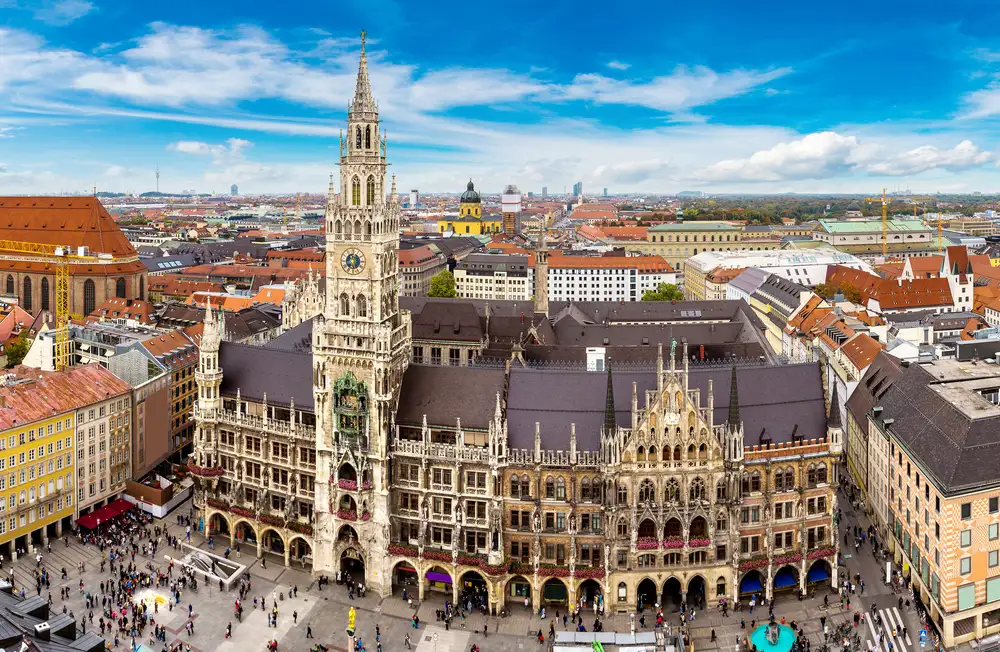
Munich
Arriving in Munich, you would be forgiven for thinking you were on the set of a movie about old Bavaria. At the Old Town beer halls, barmaids laced in dirndl dresses serve up frosty Helles lager, as oom-pah music drifts across the Marienplatz square. Men in lederhosen and checked shirts merrily give toasts as they knock glasses, or steins, as they’re known here. They sit at tables laden with wurst sausage and giant pretzels oozing with herby butter. This is Germany’s Germany, a place where folk traditions never stopped, and the revelry doesn’t either. Even when it isn’t Oktoberfest, the town’s notorious beer-drinking celebration, Munich is always happy to show you a good time. Simply cast your eyes around the lavish, gilded banquet hall at the Munich Residenz, the 13th-century Wittelsbach palace. You’ll see Munich has been impressing guests for centuries. Or, swing by the BMW Museum and check out the classic German cars. They even let you sit inside to test out the new models. At the city’s English Gardens, surfers ride waves on one of the park’s rivers. Munich is filled to the brim with this kind of pure-hearted German fun.

Learn About Munich
Build Munich Trip
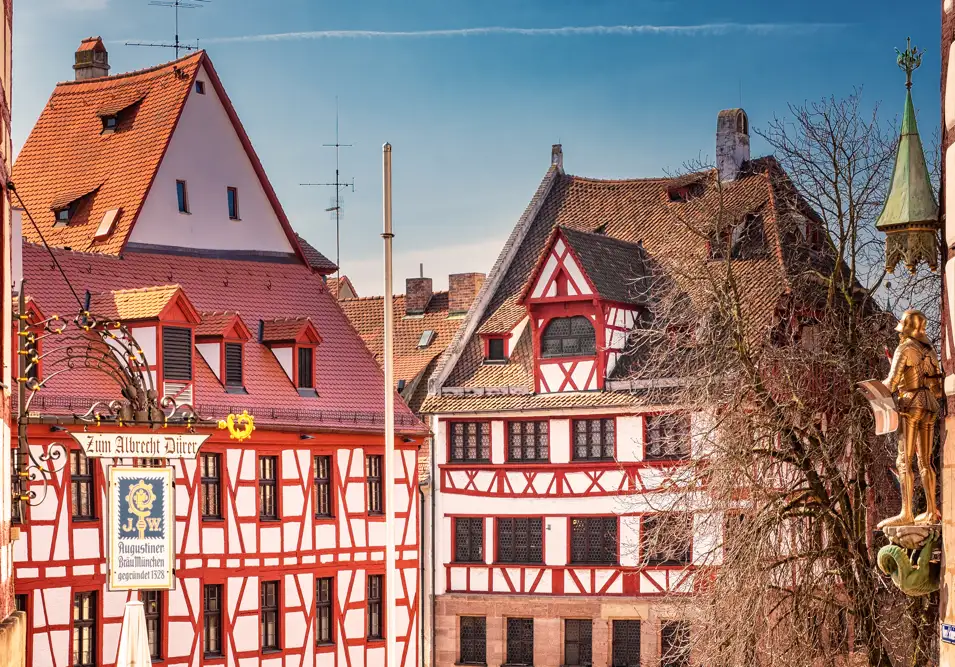
Nuremberg
One of the most authentic, storied German destinations, Nuremberg's picturesque old town, glorious castle, and buzzing Christmas Market makes this city a time-true classic. The ideal gateway to old Bavaria, Nuremberg offers a primer in German history before you embark on the lovely journey through old Bavaria, known as the Romantic Road. Considered the capital of the Holy Roman Empire in the middle ages, Nuremberg would have felt like the center of the world as a procession of kings and emperors passed through its magnificent gates. When the German Renaissance came, Nuremberg was at its heart. Albrecht Dürer, the great German master artist, was born here, and Martin Luther called Nuremberg Germany's 'eyes and ears'. Skip forward a few centuries, and the city took a dark turn, as Nuremberg became a gathering point for the German National Socialists. Slightly outside of town, you can still find the Nazi Party Rallying Grounds, a sobering reminder of the not so distant past. If it all gets too heavy, you can end the day with a glass of rotbier (red beer) and mull it over. Nuremberg is a must-see for anyone who wants to delve into Germany's past.

Learn About Nuremberg
Build Nuremberg Trip

Strasbourg
Strasbourg, the enchanting capital of Alsace, blends French elegance with German charm in a way that feels utterly unique. This riverside city invites you to stroll through cobblestone streets where half-timbered houses and flower-decked canals paint a storybook scene. At its heart rises the majestic Strasbourg Cathedral, a Gothic masterpiece whose spire once made it the tallest building in the world. Nearby, the fairytale district of Petite France beckons with its winding lanes and medieval ambiance. Beyond its old-world beauty, Strasbourg proudly serves as the seat of European unity, home to institutions like the European Parliament. In winter, its world-famous Christmas markets transform the city into a glittering wonderland of lights, aromas, and festive cheer. Whether you’re admiring centuries-old architecture or savoring Alsatian cuisine beside the river, Strasbourg offers an experience that’s both timeless and alive with spirit.

Learn About Strasbourg
Build Strasbourg Trip
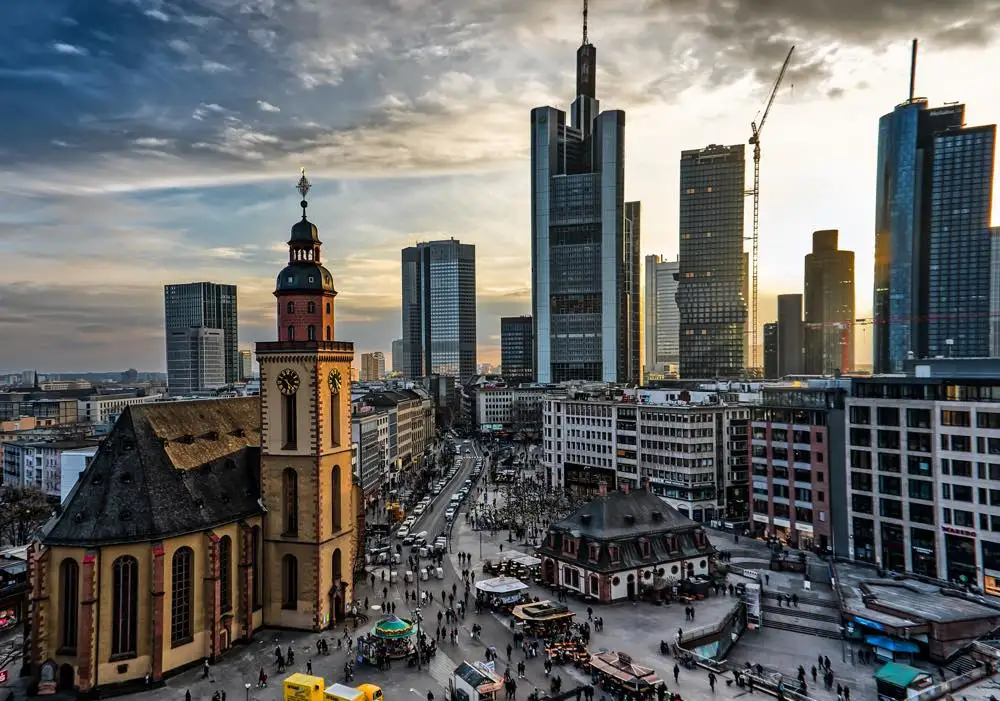
Frankfurt
Dubbed ‘Mainhatten’ for its glass highrises, financial prowess, and proximity to the Main River, Frankfurt offers a fascinating glimpse into the ‘engine room’ of Europe’s economy with an unexpected twist. Among the glass and steel buildings, the old-worldly Römerberg square will give you a double-take. The square’s 15th-century half-timbered houses, old statues, and church spires contrast dramatically against the modern 21st-century skyscrapers beyond. If you visit at Christmas, the Römerberg is truly special, aglow with the light of the tallest Christmas tree in Germany. The square fills with stalls selling handicrafts, and the air is scented with hot apple wine, honey, and cinnamon. Delve deeper into Frankfurt and you’ll find a substantial museum district, the Museumsufer (Museum Embankment). This area features a cluster of twelve museums on either side of Main River. This includes the Städel, home to Tischbein’s famous painting of renowned writer Johann Wolfgang von Goethe, one of Frankfurt’s most prestigious sons. The more time you spend in Frankfurt, the more you’ll discover a highly cultured city lurking beneath its glass facades. If you have the time, Frankfurt is certainly worth a second look.

Learn About Frankfurt
Build Frankfurt Trip
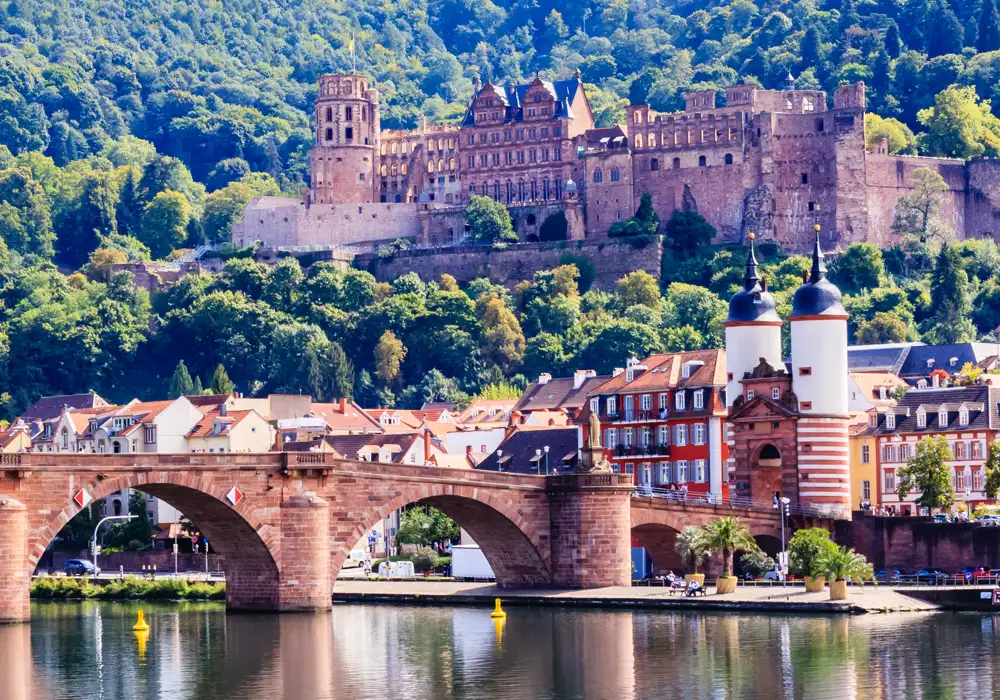
Heidelberg
Heidelberg is buried deep in the forests of southwest Germany. Flanking both sides of the Neckar River, Heidelberg's red and white baroque old town looks like something from a book of folktales. On the hillside above the town, you'll see the looming, tumbledown remains of Heidelberg's Gothic-Renaissance castle, Heidelberger Schloss. The subject of strange local legends, Heidelberg Castle was once home to knights, a famous court jester, and even a witch. It is said the first person who pulls out an iron ring embedded in one of the great doors will be the castle's true owner. Surely on your visit, it's worth a try? Across the river, follow in the footsteps of scholars on a hiking trail known as The Philosophers’ Way. Heidelberg University is the oldest in Germany, and its leafy, temple-like campus contributes to the gentle, contemplative atmosphere of the town. A poetic city with the dreamy feel of a watercolor painting, it's no wonder Heidelberg inspired writers like Mark Twain and Johann Wolfgang von Goethe. The city has even been recognized by UNESCO as a City of Literature. Especially on misty, grey days, Heidelberg has a way of sweeping you up in its romanticism.

Learn About Heidelberg
Build Heidelberg Trip
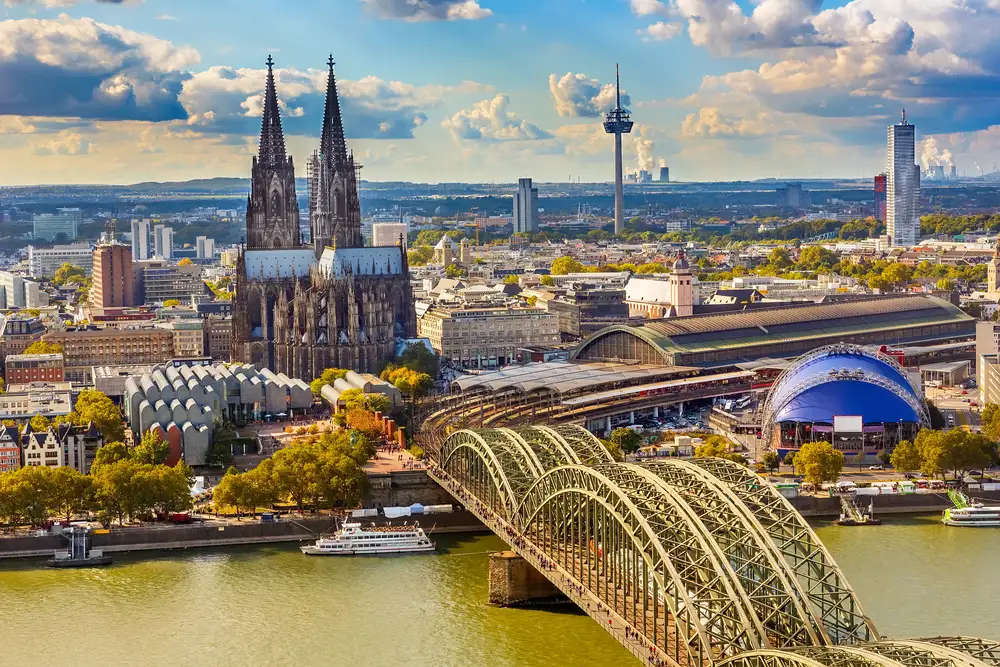
Cologne
As you travel through Western Germany, Cologne is a cheerful, fun city to stop for a night or two. Flanking both sides of the Rhine river, Cologne's delightful architectural pastiche reflects the breezy anything-goes attitude of its inhabitants. Like most German cities, Cologne took a hit during WWII, losing some of its old-world buildings and neighborhoods. However, thanks to the endurance of the Cologne Cathedral and iconic Hohenzollern Bridge, the city has kept its identity close to hand. Sometimes quite literally in the form of a glass of sparkling Kölsch local beer. A visit to Cologne should always include paying a call to its eponymous Cathedral. A sensational, Gothic behemoth of a building and a UNESCO Heritage Site, Cologne Cathedral will get you right in the heart, humbling all who enter it. Just outside the cathedral, the Hohenzollern Bridge spans the Rhine, with three iron truss arches looping over the river like the bounces of a skimming stone. After wandering the riverside, if you're looking for some indulgence, Cologne's Chocolate Museum is an eternally popular choice. Maybe you'll be under the influence of the cocoa, but at the end of a day in Cologne, life can seem pretty sweet.

Learn About Cologne
Build Cologne Trip

Munich
Arriving in Munich, you would be forgiven for thinking you were on the set of a movie about old Bavaria. At the Old Town beer halls, barmaids laced in dirndl dresses serve up frosty Helles lager, as oom-pah music drifts across the Marienplatz square. Men in lederhosen and checked shirts merrily give toasts as they knock glasses, or steins, as they’re known here. They sit at tables laden with wurst sausage and giant pretzels oozing with herby butter. This is Germany’s Germany, a place where folk traditions never stopped, and the revelry doesn’t either. Even when it isn’t Oktoberfest, the town’s notorious beer-drinking celebration, Munich is always happy to show you a good time. Simply cast your eyes around the lavish, gilded banquet hall at the Munich Residenz, the 13th-century Wittelsbach palace. You’ll see Munich has been impressing guests for centuries. Or, swing by the BMW Museum and check out the classic German cars. They even let you sit inside to test out the new models. At the city’s English Gardens, surfers ride waves on one of the park’s rivers. Munich is filled to the brim with this kind of pure-hearted German fun.

Learn About Munich
Build Munich Trip

Nuremberg
One of the most authentic, storied German destinations, Nuremberg's picturesque old town, glorious castle, and buzzing Christmas Market makes this city a time-true classic. The ideal gateway to old Bavaria, Nuremberg offers a primer in German history before you embark on the lovely journey through old Bavaria, known as the Romantic Road. Considered the capital of the Holy Roman Empire in the middle ages, Nuremberg would have felt like the center of the world as a procession of kings and emperors passed through its magnificent gates. When the German Renaissance came, Nuremberg was at its heart. Albrecht Dürer, the great German master artist, was born here, and Martin Luther called Nuremberg Germany's 'eyes and ears'. Skip forward a few centuries, and the city took a dark turn, as Nuremberg became a gathering point for the German National Socialists. Slightly outside of town, you can still find the Nazi Party Rallying Grounds, a sobering reminder of the not so distant past. If it all gets too heavy, you can end the day with a glass of rotbier (red beer) and mull it over. Nuremberg is a must-see for anyone who wants to delve into Germany's past.

Learn About Nuremberg
Build Nuremberg Trip

Strasbourg
Strasbourg, the enchanting capital of Alsace, blends French elegance with German charm in a way that feels utterly unique. This riverside city invites you to stroll through cobblestone streets where half-timbered houses and flower-decked canals paint a storybook scene. At its heart rises the majestic Strasbourg Cathedral, a Gothic masterpiece whose spire once made it the tallest building in the world. Nearby, the fairytale district of Petite France beckons with its winding lanes and medieval ambiance. Beyond its old-world beauty, Strasbourg proudly serves as the seat of European unity, home to institutions like the European Parliament. In winter, its world-famous Christmas markets transform the city into a glittering wonderland of lights, aromas, and festive cheer. Whether you’re admiring centuries-old architecture or savoring Alsatian cuisine beside the river, Strasbourg offers an experience that’s both timeless and alive with spirit.

Learn About Strasbourg
Build Strasbourg Trip

Frankfurt
Dubbed ‘Mainhatten’ for its glass highrises, financial prowess, and proximity to the Main River, Frankfurt offers a fascinating glimpse into the ‘engine room’ of Europe’s economy with an unexpected twist. Among the glass and steel buildings, the old-worldly Römerberg square will give you a double-take. The square’s 15th-century half-timbered houses, old statues, and church spires contrast dramatically against the modern 21st-century skyscrapers beyond. If you visit at Christmas, the Römerberg is truly special, aglow with the light of the tallest Christmas tree in Germany. The square fills with stalls selling handicrafts, and the air is scented with hot apple wine, honey, and cinnamon. Delve deeper into Frankfurt and you’ll find a substantial museum district, the Museumsufer (Museum Embankment). This area features a cluster of twelve museums on either side of Main River. This includes the Städel, home to Tischbein’s famous painting of renowned writer Johann Wolfgang von Goethe, one of Frankfurt’s most prestigious sons. The more time you spend in Frankfurt, the more you’ll discover a highly cultured city lurking beneath its glass facades. If you have the time, Frankfurt is certainly worth a second look.

Learn About Frankfurt
Build Frankfurt Trip

Heidelberg
Heidelberg is buried deep in the forests of southwest Germany. Flanking both sides of the Neckar River, Heidelberg's red and white baroque old town looks like something from a book of folktales. On the hillside above the town, you'll see the looming, tumbledown remains of Heidelberg's Gothic-Renaissance castle, Heidelberger Schloss. The subject of strange local legends, Heidelberg Castle was once home to knights, a famous court jester, and even a witch. It is said the first person who pulls out an iron ring embedded in one of the great doors will be the castle's true owner. Surely on your visit, it's worth a try? Across the river, follow in the footsteps of scholars on a hiking trail known as The Philosophers’ Way. Heidelberg University is the oldest in Germany, and its leafy, temple-like campus contributes to the gentle, contemplative atmosphere of the town. A poetic city with the dreamy feel of a watercolor painting, it's no wonder Heidelberg inspired writers like Mark Twain and Johann Wolfgang von Goethe. The city has even been recognized by UNESCO as a City of Literature. Especially on misty, grey days, Heidelberg has a way of sweeping you up in its romanticism.

Learn About Heidelberg
Build Heidelberg Trip

Cologne
As you travel through Western Germany, Cologne is a cheerful, fun city to stop for a night or two. Flanking both sides of the Rhine river, Cologne's delightful architectural pastiche reflects the breezy anything-goes attitude of its inhabitants. Like most German cities, Cologne took a hit during WWII, losing some of its old-world buildings and neighborhoods. However, thanks to the endurance of the Cologne Cathedral and iconic Hohenzollern Bridge, the city has kept its identity close to hand. Sometimes quite literally in the form of a glass of sparkling Kölsch local beer. A visit to Cologne should always include paying a call to its eponymous Cathedral. A sensational, Gothic behemoth of a building and a UNESCO Heritage Site, Cologne Cathedral will get you right in the heart, humbling all who enter it. Just outside the cathedral, the Hohenzollern Bridge spans the Rhine, with three iron truss arches looping over the river like the bounces of a skimming stone. After wandering the riverside, if you're looking for some indulgence, Cologne's Chocolate Museum is an eternally popular choice. Maybe you'll be under the influence of the cocoa, but at the end of a day in Cologne, life can seem pretty sweet.

Learn About Cologne
Build Cologne Trip
prev
next


 Map of Your Itinerary Route
Map of Your Itinerary Route
Zoom In to the cities to see your itinerary in more detail


 4.8
4.8 